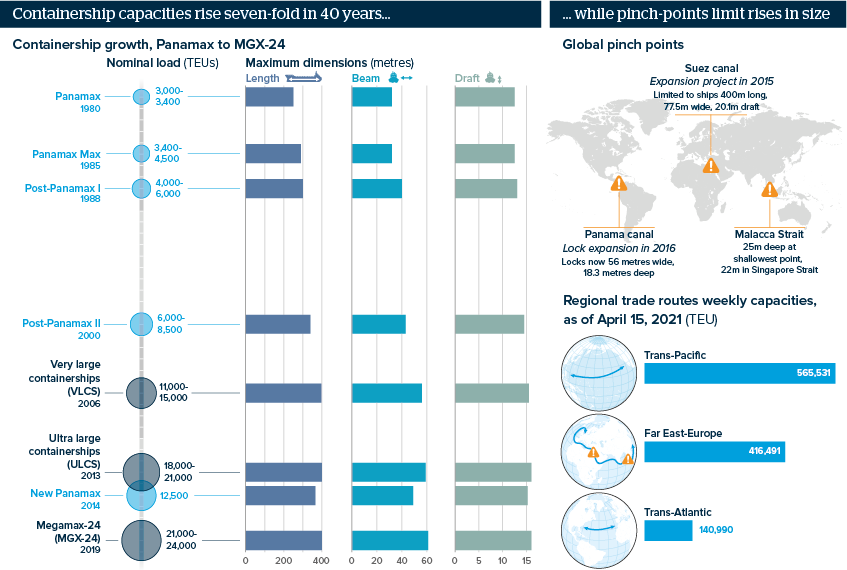Giant containerships may have reached natural limits
Building ULCS of >15,000 TEU has made shipping more efficient but failed to consider other stakeholders such as ports
Source: Rodrigue, J-P et al. (2020) The Geography of Transport Systems, Hofstra University, Department of Global Studies & Geography, https://transportgeography.org; Alphaliner , Oxford Analytica.
Outlook
When the Ever Given blocked the Suez canal in March, it highlighted how big such containerships have become -- a ship ‘nearly as long as the Empire State building is high’. A surge in very large and ultra large containerships (VLCS and ULCS) has ignored ports’ capacities to unload and disperse containers, and to dredge continually.
However, these giants may grow no more. Ships’ capacities may have more than doubled in 15 years to nearly 24,000 twenty-foot equivalent units (TEU), but dimensions have grown little if at all over the same period. That is because of such constraints as shallow straits, and canal and harbour infrastructure.
Impacts
- There are currently no new containerships on order with capacities greater than 24,000 TEU.
- The world’s largest container operator, Maersk, has no ships bigger than 20,954 TEU and has decided not to exceed that capacity.
- Highly efficient VLCS and ULCS bring economies of scale, but are less flexible operationally and smaller ships form 70% of fleets.
- Ways of increasing capacity within size limits, such as squarer hulls, repositioned bridges and stacking containers higher, are running out.
See also
- Freight rates will normalise higher than pre-pandemic - Jan 25, 2022
- Ever Given may embroil Egypt in liability disputes - Mar 30, 2021
- Container shipping congestion will disrupt world trade - Mar 9, 2021
- Worsening drought threatens Panama Canal - Jan 20, 2020
- More graphic analysis
